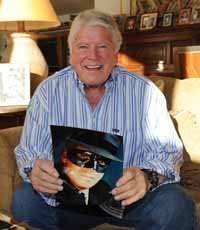
Windex is an American brand of glass and hard-surface cleaners—originally in glass containers, later in plastic ones.
Drackett sold the Windex brand to Bristol-Meyers in 1965.[2] S. C. Johnson acquired Windex in 1993 and has been manufacturing it since.
The original Windex was yellow. Today, there are varieties marketed in several colors (ocean fresh blue, sunshine lemon, and citrus orange) and fragrances (spring bouquet, ocean mist, lavender, and tea tree), with a number of additives such as vinegar, lemon, lime, or orange juice.
Ingredients
On August 26, 1969, Melvin E. Stonebraker and Samuel P. Wise received U.S. patent #3,463,735 for a glass cleaning composition, listing example formulae, one of which is 4.0% isopropyl alcohol, 1% ethylene glycol monobutyl ether, 0.1% sodium lauryl sulfate (a surfactant), calcium (Ca) 0.01%, tetrasodium pyrophosphate (a water softener), 0.05% of 28% ammonia, 1% of a dye solution, and 0.01% perfume. This formula was not only inexpensive to manufacture but allowed the product to be packaged in glass bottles and dispensed with a plastic sprayer.
In 1989, Windex was a 5% ammonia solution. The product was reformulated in 2006. In 2009, S.C. Johnson started publishing ingredients for all of its products, including Windex. The S.C. Johnson website lists Windex's ingredients as water, 2-hexoxyethanol, isopropanolamine, sodium dodecylbenzene sulfonate, lauramine oxide, ammonium hydroxide, fragrance, and Liquitint sky blue dye. An alternative variant also for household use cites water, hexoxyethanol, isopropanolamine, ammonium hydroxide, sodium C10-C16 alkylbenzenesulfonate, lauramine oxide, sodium xylene sulfonate, colorants, and fragrances.
Competition
Windex's main competitor in the window cleaning market is Glass Plus, a glass cleaning product produced by Reckitt Benckiser, which Windex's current owner S. C. Johnson & Son was required to divest to gain the approval of the Federal Trade Commission to acquire Dow Chemical Company's DowBrands consumer products division (the original owner of the Glass Plus brand).
- 1 teaspoon vegetable oil
- 1/2 cup chopped cooked ham
- 1/4 cup diced green bell pepper
- 2 tablespoons diced onion
- 1/2 teaspoon garlic powder
- 1/4 teaspoon salt
- 4 eggs
- 2 tablespoons water, at room temperature
- 1/2 cup shredded cheddar cheese
- In a medium nonstick skillet over medium heat, heat oil until hot. Add ham, bell pepper, onion, garlic powder, and salt. Saute 4 to 5 minutes, or until veggies are tender. Remove from skillet and set aside.
- Coat skillet with cooking spray and place over medium heat.
- In a medium bowl, beat eggs with water. Add to skillet and with a rubber spatula, gently stir, pushing the cooked portion of the eggs to the center of the pan.
- When eggs firm up and are no longer liquidy, sprinkle half the omelet with cheese and top with ham mixture. Cook until cheese is melted. Slide omelet onto platter, fold over filling, cut in half, and serve.
National Chocolate Souffle Day celebrates a delightfully delicious dessert on February 28th each year.
The word souffle is the past participle of the French verb souffler, which means “to blow up” or more loosely “puff up” which describes a souffle perfectly. A souffle is a lightly baked cake made with egg yolks and beaten egg whites that are combined with other ingredients to make the dish either a savory main dish or a sweet dessert.
Two essential components make up every souffle.
1. a French creme patisserie base/flavored cream sauce or puree
2. egg whites beaten to a soft peak meringue
A souffle gets its flavor from the base, and the egg whites provide the lift to puff it up. A variety of cheeses, jams, fruits, or chocolates can be baked into the base of the souffle. Many souffle bakers like to puncture the top of the souffle after removing it from the oven. Then they pour mouth-watering sauces onto it, such as chocolate, vanilla, or for a savory flavor cheese and herbs.
HOW TO OBSERVE
Souffles offer an opportunity to show off and invite friends to share in the celebration.
February 28th, National Tooth Fairy Day, encourages us to take a look back on the history of one of dental care’s little helpers. It’s one way our children develop good dental hygiene.
Like some of the fantastic creations who oversee children, the tooth fairy is a relative newcomer to the world of childhood fantasies.
1920s
In the mid-1920s, fairies were used for all sorts of health education, from bath fairies to fresh air fairies as a way to get kids to remember to eat their vegetables, wash behind their ears and get a good night’s rest. Like toothpaste today advertises fruity flavors and sparkles to get kids excited to brush their teeth, in 1925, it was probably quite a bit more difficult considering the pastes were mostly peroxide and baking soda. One advertisement was for a Fairy Wand Tooth Whitener. This product promised to brush away cigarette and coffee stains. The ad was aimed at both children and adults, we hope!
Then in 1927, Esther Watkins Arnold printed an eight-page playlet for children called The Tooth Fairy. The same year Sir Arthur Conan Doyle “proved” his claim that fairies and gnomes are real and “verified” with pictures of two little girls surrounded by fairies. The world was ripe with imagination and primed to have a tooth fairy to come collect the lost teeth of little boys and girls and leave a coin or two behind.
Arnold’s play began to be performed in schools the following year, and the tooth fairy has been slipping into homes ever since. She (or he) started leaving nickels and dimes under the pillows of sleeping children. Over the years, there have been variations on the theme.
NATIONAL TOOTH FAIRY DAY HISTORY
Children’s author, Katie Davis, created the February 28th observance of National Tooth Fairy Day. While there is also an August 22nd observance, it is interesting to note the two observances are six months apart and the American Dental Association’s recommendation to have cleanings twice annually













.jpg)






















